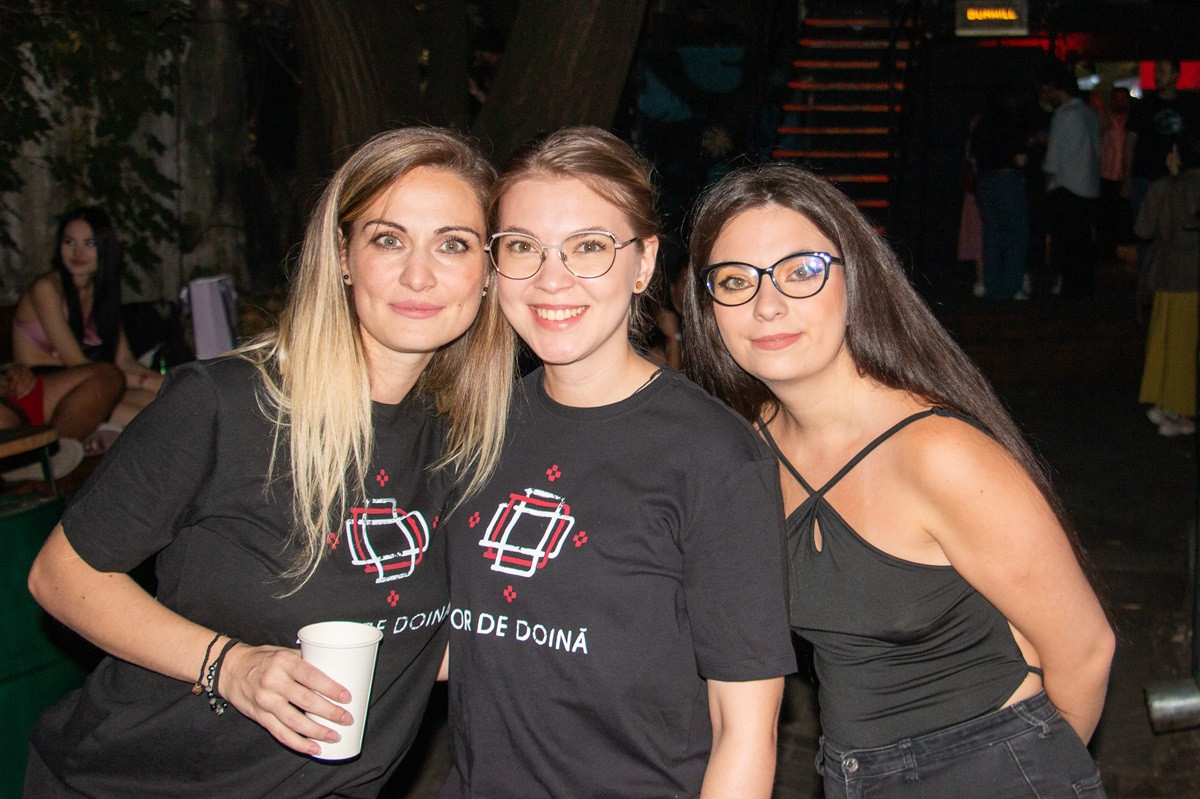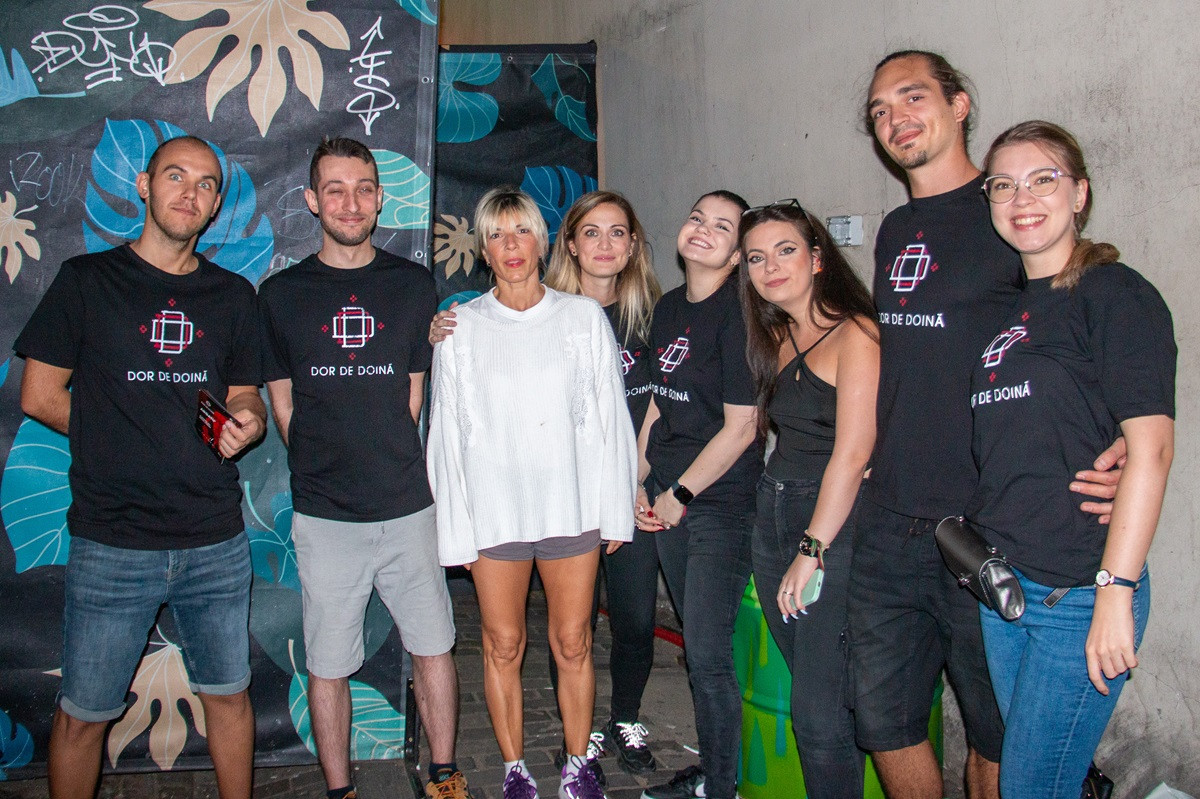Returning to roots and traditions is often viewed with reluctance. Maybe it’s because we don’t know how to do it in real terms anymore, beyond wooden language or marketing. The Frui Vita Association tries a different way back and creates, for the second year in a row, a context in which the public can reconnect with its cultural roots, from a perspective with great respect for traditions and with great openness to modernity. After a period in which the initiators of the project stayed away from home, “Dor de Doină” came as an opportunity to pass on and share doina and the deep feelings it compresses, including through a manual digital bilingual.
About the origins, the challenges of a cultural NGO at the beginning of the road and how we keep our direction in a world where tradition, values and authenticity are too often used as markers in commercial endeavors, I told below with part of the Frui Vita team: Ioana Diana Bogdan Teașca – founder, Eusebius Bogdan – co-founder, Andreea Ioana Chirciu – creative director.
The road from Dor to Doină
Eusebius: I’ve tried quite a few things by the age of 39, from corporate and freelancing to an experience in tourism on the African continent, but so far I haven’t been able to find that professional satisfaction we all seek.
John: I like to say a traveler who has been exploring and continues to do so. I graduated from the Academy of Economic Studies – Tourism Trade Specialization, I did not immediately work in the studied field. When I was on the faculty I volunteered in TVR, that was the world that attracted me, I also became a corporatist in the meantime, but I couldn’t find myself and, throughout the period, until today, I continued to collaborate in countless cultural projects, concerts and festivals film. I put them on hold only during the period when I decided to move on to a new challenge on the African continent, and the return crowned with DOR brought with it, if I may say so, the establishment of the association, which for me was a very big dream. many years
What plans does a cultural NGO set out on?
John: The establishment of the association, as I was saying, for me was a dream for many years and it came right before our return to the country. I wanted us to develop projects through our eyes and senses, to make something meaningful that each of us is passionate about, that doesn’t constrain us and that conveys. Personally, I don’t think that the cultural landscape is loaded at all, more than that, how many young people do you think are close to Romanian culture today?
We live in the digital age, and the approach to the young generation, in a way adapted to it, with specialized information but which at the same time attracts them, according to the research carried out, did not turn out to be abundant. Moreover, I believe that civil society could collaborate to improve the development of the level of culture among the young generation, the education of the next generation and not only that, because there are so many other aspects that can be addressed. I continue to be a dreamer who among other things believes in the saying “all for one and one for all”.
Eusebius: After traveling quite a bit, visiting and learning what others are promoting, with my wife, right after the pandemic, we decided it was time to show the whole world what defines us as a people, the beauty we have and unfortunately, we kind of keep it to ourselves.
That in any field, there is room under the sun for everyone, so if the ideas are good, any new organization can make its way among the existing ones.
Challenges overcome and lessons learned
Eusebius: We started last year with the first edition of “Dor de doina” and, in parallel, with “Bucurește-te cu noi”, a project that is still in a creative phase. The biggest challenge in this world was to open doors, being at the beginning of the journey. When you don’t have a portfolio, even though you have a lot of ideas, it’s hard to find people to support you. In general, if what you do is what you want, every closed door is an open window. So, if last year we were mostly self-financed, this year we managed to be supported by the Ministry of Culture and more, which I say is a very big step.
John: Within the association we developed, as Eusebiu also said, the two projects, “Dor de doina”, which even ended up growing unexpectedly in one year, and “Bucurește cu noi”, in which we develop a lot of work in back and which will soon come with events and activities. Both projects have in common the promotion of cultural heritage, the encouragement of young artists, communication in a form adapted to the digital age, the support of social causes and social inclusion and much more.
There were many challenges, it’s quite difficult, especially at the beginning and especially because there are quite a lot of prejudices regarding the establishment of a new NGO, but that’s it, there were moments when I gave in, others when I said I had to to succeed and not give up. It seems that there is always a light at the end of the tunnel, ours was the Ministry of Culture and the partners who joined us to support us in passing our message and cause further. Thanks on this way and with trust and love ahead!
A moment of discovery
Andrée: When you get into this rather alert rhythm that we all are in, it’s easy to forget why you’re doing what you’re doing, what you’re doing it for, or who you’re doing it for. I think we need to find moments of reflection, of introspection to remember who we are and where we come from. The Dor de Doină project is a way in which we try to offer people such a moment of reconnection with themselves, and it is also a way in which we, in turn, do the same.
John: We arrived at “Dor de doină” from longing and doină (smiles), longing for us and the riches we have to offer and doina, UNESCO intangible cultural heritage, which I think needs no further introduction. “Dor de Doină” is more than a project, for me it is a return to our roots, in a unique and authentic way, it is about each of us, about emotions and about the Romanian soul.
Why go to Dor de Doină
John: We propose to those who come this Saturday to the Botanical Garden a journey in an atypical wayas we did last year, but with a wide range of attractive activities through which we promote heritage and traditions so that the younger generation does not forget their roots. The public will have the opportunity to participate in Romanian craft workshops supported by specialists, in interactive workshops for children who can get to know the doina and the traditions through various games, to see a painting exhibition and will also have other surprises.
Of course, we will celebrate doina in a unique way with artists such as Maria Casandra Hauși and Sorin Romanescu, who will bring to the fore the magic of doina through the NOD (New Old Doina) project and ARGATU, an artist who returns to the Dor de Doina stage with the interpretation its electrifying music that keeps Romania’s authentic musical heritage alive.
Returning to the roots – between authenticity and marketing tool
John: My opinion is that we are talking about different things….what we convey is completely different, that is why we were born. I don’t know if any answer I would give at this moment could describe better than the interpretation of doina in nature that you will hear from the voice of Maria-Casandra Hauși, I invite you to see what feelings that moment brings you and you will understand what the return to roots issued by doina… doina was inseparable from Romanian life, her sung verses expressed joy in times of celebration, hope in difficult moments of history, comforted the soul and soothed sorrows, mirrors the past she witnessed, transmits an inexplicable human vibration…back-to-roots marketing tool has no context here.
I invite you to read the testimony of Constantin Brăiloiu in conversation with Béla Bartók who will tell you more than I, who am a simple transmitter, can do:
“I will not soon forget how one evening, during a casual conversation, Béla Bartók told me that, returning some 20-25 years ago, from a village where he had worked, he walked along of a river at sunset, carrying his legendary Edison phonograph. On the way, he met a peasant woman and they exchanged a few words. Seeing her confident, he asked her to sing, but she defended herself under the well-known pretexts (…). However, it had barely disappeared after a bend in the road and its song was heard, filling the sunny valley, and Bartók listened to it for a long time. And when he raised his head, which he had hitherto kept bowed, I thought I saw a tear veil the extraordinary blue of his eyes. But what had impressed him so much about that memory? the song? He knew hundreds like them. The scenery? He had seen much more beautiful ones.
The serenity of a late summer afternoon? He had tasted it countless times. It was, beyond all this, the emotion of privileged moments, in which we are allowed a penetration into the soul of a hidden humanity and which the shadow is already beginning to cover.”
Andrée: The landscape is quite noisy on many topics, but as long as we have as a benchmark the values we believe in and keep our authenticity, the direction will remain the right one. Our goal is that the people who get to know our project can really feel what we are trying to do, and if we succeed in doing that, then we know that the direction was good.
Source: www.iqads.ro




